Oncidium orchids are called lluvia de oro (golden rain) in Spanish and dancing ladies in English because the individual flowers look like ladies dancing. They’re a widely hybridized orchid available in many different colors.
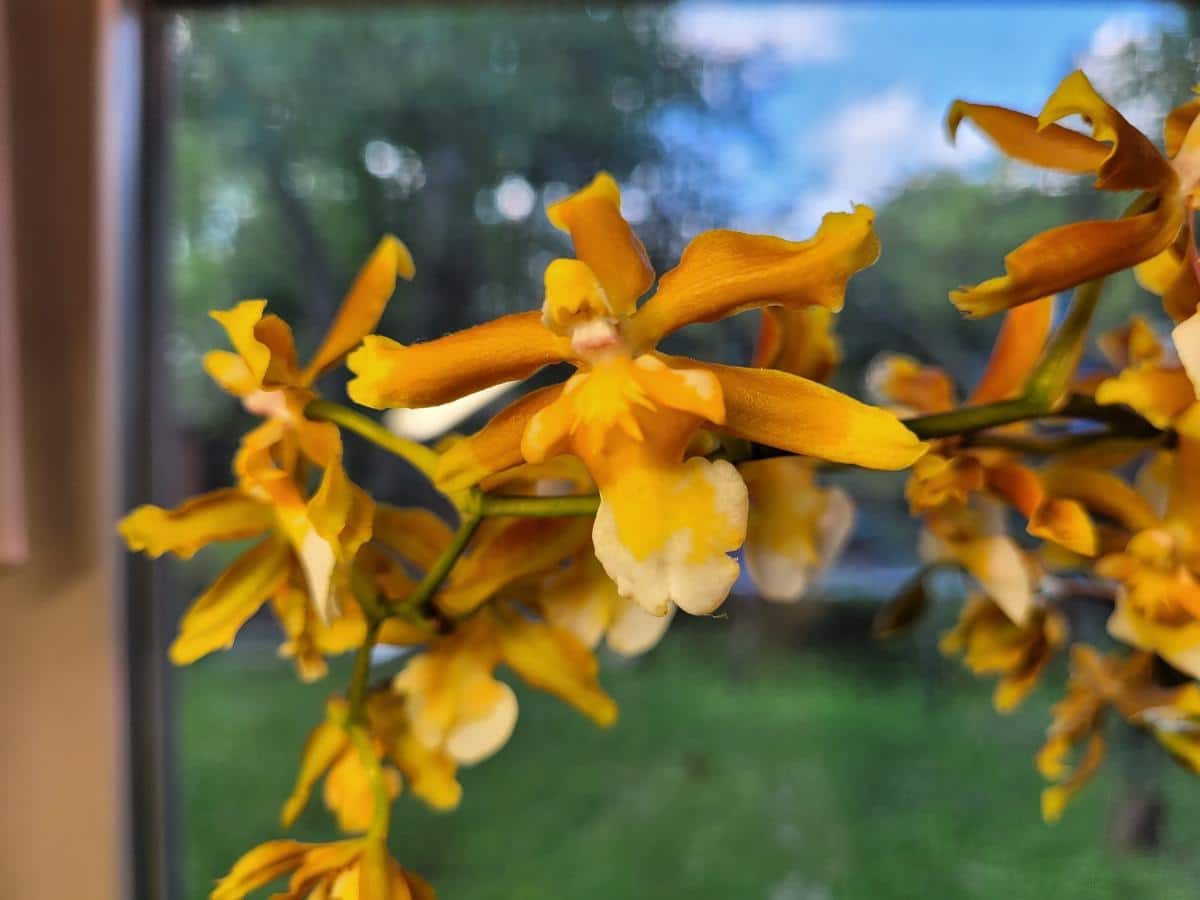
One popular variety called ‘Sharry Baby’ produces blossoms that smell like chocolate. Another Oncidium called Mclna. Yellow Star ‘Golden Gambol’ has brilliant yellow star-shaped flowers splashed with burgundy. Read on now and learn more about oncidiums and how to keep them blooming.
Jump to:
What is the Oncidium Alliance?
The plants in the Oncidium genus are referred to as the Oncidium Alliance – a strange choice, but orchids are strange plants.
The Oncidium genus is, to put it mildly, a hot mess. There is a great deal of variety between these orchids, not only in plant size and flower color but in cultural needs as well.
Why is there so much variance between these orchids? It turns out that many of these orchids in this genus are actually not related. There are surprise hybrids and weird ancestral confusion, and other insanity. What’s more, a number of intergeneric hybrids also fit under this genus’s umbrella. It’s kind of like the Maury Povich Show, except with more science and less funding.
At any rate, for the sake of simplicity (and sanity), these orchids are generally referred to as the Oncidium Alliance, which sounds like something out of Star Trek.

All About Oncidiums (in a Nutshell)
In the wild, these are (mostly) epiphytic plants growing on trees with their roots soaking up water from the air and the rain. The roots will rot if they’re put in heavy soil.
They have pseudobulbs – a chubby, modified stem that stores reserves of water, starches, and other nutrients needed for energy.
Oncidiums grow differently than orchids like Phalaenopsis (aka butterfly or moth orchids). Phals generally grow from a central point in the middle of the plant. Oncidiums, however, generate new growing tips in different places, sometimes several at once, and grow out instead of up.
Only new growth produces flowers. After blooming, it doesn’t grow any more new leaves or flowers. After its old leaves fall off, its pseudobulb acts as a storage tank for the orchid, while new growth elsewhere provides another flower stalk.
General Cultural Needs
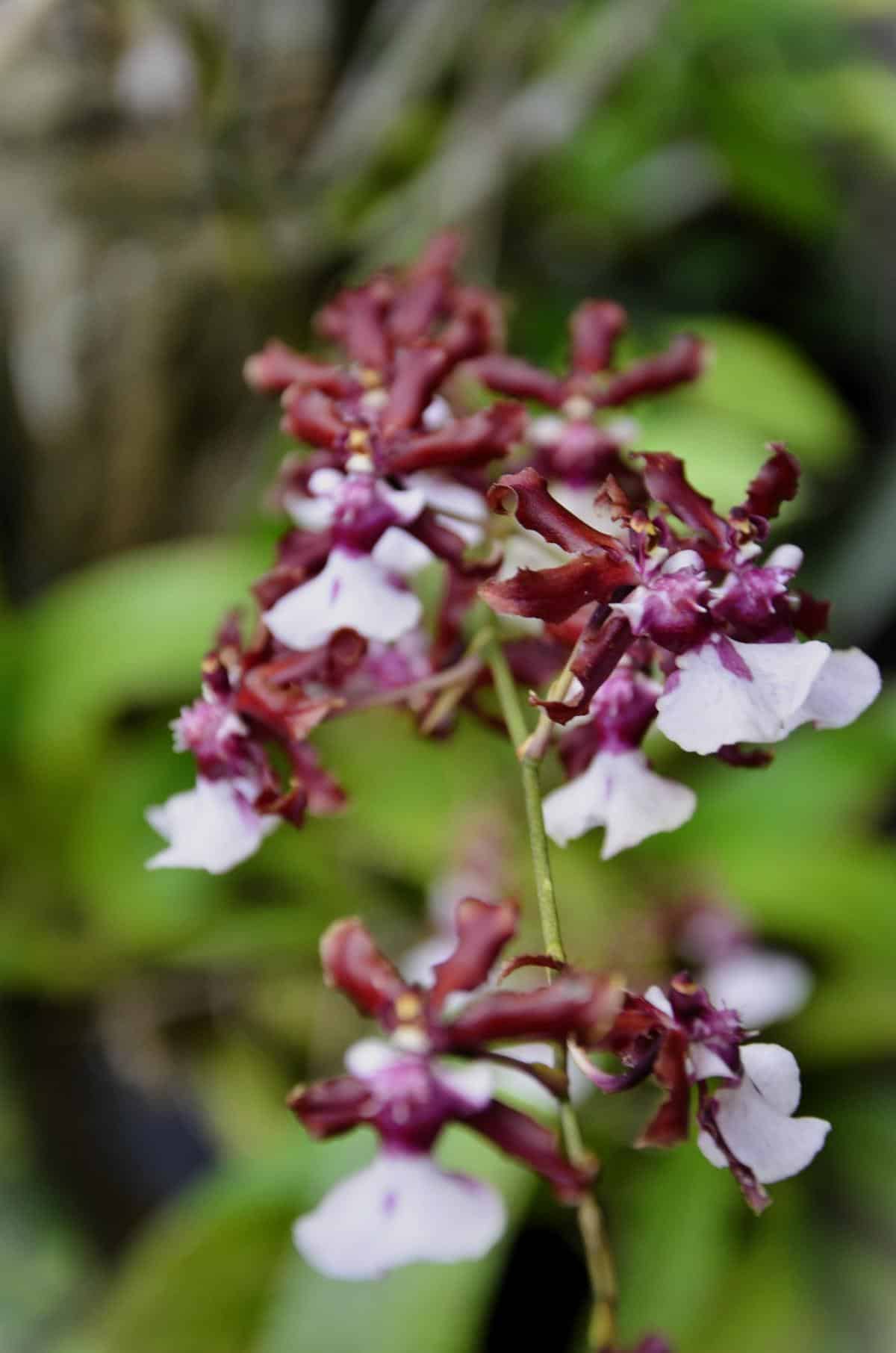
Water often. If you have lots of minerals in your tap water, give them rainwater, which contains good stuff that plants love. Orchids will grow big, thick roots and become healthier. If you have alkaline or hard water, add a teaspoon of vinegar to the watering can to lower the water’s pH, which makes it easier for plants to rook
Provide drainage. The potting mix should consist of small or medium-sized bark bits with sphagnum moss, something that provides excellent drainage but holds a little moisture.
Lots of light (usually). A window with lots of bright light to nearly full sun is great, but they might do better with an additional grow light. Oncidiums with thicker leaves, such as mule-ear or equitant oncidiums, prefer more light.
Warm temperatures. They’re at their best with temps between 80 to 85 degree day temperatures, and night temps of 50 to 55 degrees. However, they don’t fuss if the temps don’t meet these standards.
About Dividing Oncidiums

Most every year, the orchid will start some new growth from the front of the plant. It might be tempting to take that growth off and start a new oncidium with it – I know I was tempted.
Fortunately, a more knowledgeable orchid grower stopped me. The newest growth is always the growth that will flower next. If it’s removed, it could take years to generate another flower!
Wait to divide oncidiums for a couple of years if you have a young plant, and let it grow to a much larger size. A new oncidium orchid should have at least 3 recent pseudobulbs for a successful start, more if possible.
Breaking off a pseudobulb also weakens oncidiums (any orchids, really). So divide an oncidium only after the pot gets too crowded and it has enough pseudobulbs to support the parent plant after the baby plant is broken off. For best results on both ends, the parent should have at least 6 pseudobulbs, more if possible.
The old pseudobulbs that were finished with growing leaves and flowers are still finished – but once they’re divided, they’re invigorated and send out new growth that will grow leaves and flowers.
When Should I Repot My Oncidium Orchid?
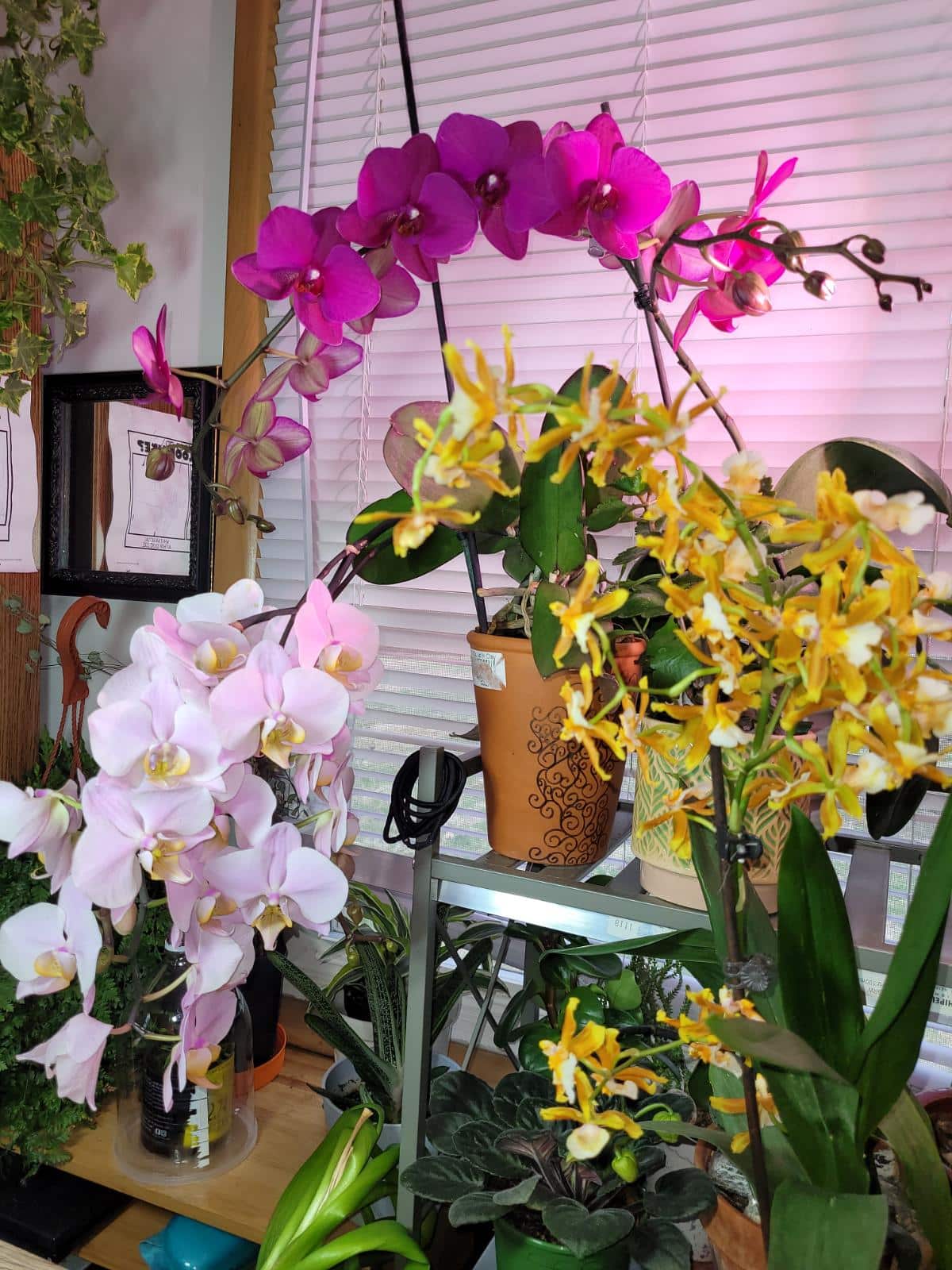
Sometimes, repotting can be traumatic for an orchid, especially if the root system isn’t healthy – very common in orchids bought from a big box store.
Oncidiums have this same problem. Their delicate roots are easily broken and will die back after repotting, so there should be at least two years between repottings – more if possible.
Here are some tips for the best results.
- You don’t always have to repot an orchid. Lift the rootball a little bit out of the pot to check the roots. If they look healthy and the orchid is growing well, put off repotting.
- However, if the oncidium is cramped in the little pot –
- If the potting medium is old and has broken down –
- If the orchid has finished blooming and the flowering stem has died off –
- And if new roots are growing on the most recent pseudobulb –
- Then that’s the time to repot!
Repotting an Oncidium Alliance Orchid
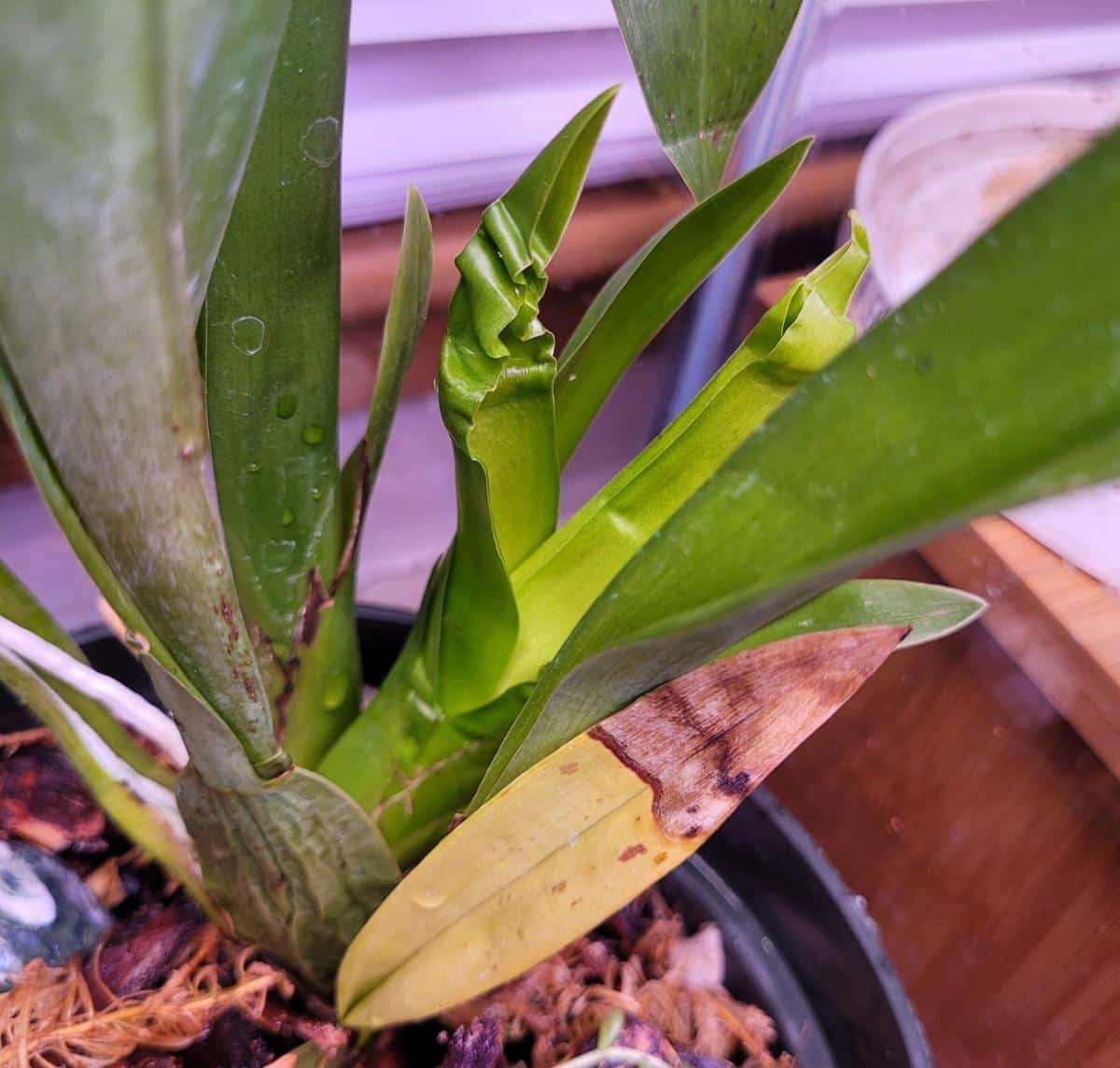
Different orchids prefer different pot sizes. For example, dendrobiums prefer to squeeze into a pot like a cat into a too-small box, and they detest being repotted.
Oncidium orchids are the opposite. These orchids are thirsty and like a lot of space to stretch out their roots. If they have a big pot, they will create a serious root system to take advantage of – and grow beautifully. A big pot also means more time between repotting.
Choose a big pot that will easily fit at least 3 or 4 new pseudobulbs.
Use a 50/50 mix of small- to medium-grade bark mixed with sphagnum. Bark allows for excellent drainage and for air to reach the roots. Sphagnum helps keep the roots moist between waterings. Fine-rooted oncidiums might prosper if some coco coir was mixed with bark, perlite, and a little charcoal – but the potting medium has got to have good drainage, especially in winter.
Remove the plant from the old pot. If the old potting mix is broken down and sour, carefully remove it and gently rinse the roots. Trim off dead roots, leaves, and pseudobulbs.
Set a little bark in the bottom of the new pot. Hold the oldest pseudobulbs against one side of the pot, with the newest growth toward the middle of the pot to give it room to grow. Gently spread the roots out while adding the new potting medium.
How To Keep the Oncidium Blooming!
Lack of light is the top reason that an oncidium orchid is not blooming. My oncidium didn’t produce a flower spike until I put it under a blurple grow light. (This is what some people call the red and blue grow lights.) Only then did it put out a flower spike. These days, I give it its own private grow light on a stick to keep it lit.
Increase the light in increments to avoid burning the leaves.
Most of the common Oncidiums don’t need a long winter rest or even a cooling period to bloom. It could help – couldn’t hurt. Some orchids might be jolted out of their complacency after a night and be triggered into bloom by a 10-degree drop in night temperature. Sometimes, a little shock of change can trigger an orchid to flower.
Look at your fertilizing regimen. How much nitrogen is in your fertilizer? Too much nitrogen will green up your plants but to the detriment of the flowers.
Try switching to “weakly weekly” feeding – that is, water orchids with a weak, diluted dose of fertilizer every week. Some time-release fertilizers, such as Osmocote, can burn roots when the temperature is hot because the fertilizer is released too quickly for the tender roots. They can also lead to salt buildup in the potting media.
Troubleshooting Oncidiums
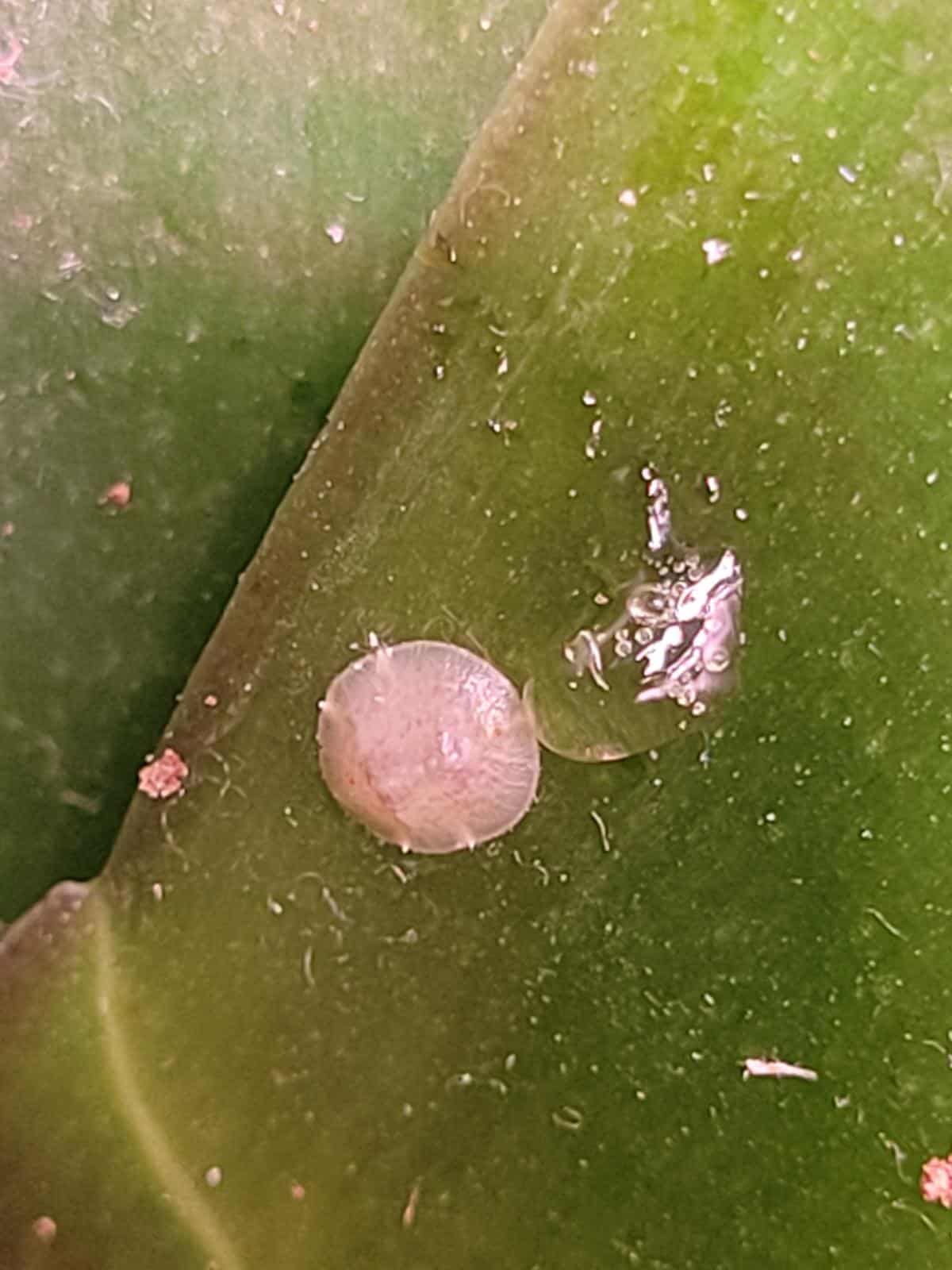
Aphids, scales, mealybugs, and other insect pests can afflict these orchids. Read more about the Top 10 Insect Pests + 11 Ways to Utterly Destroy Them.
New leaves that are wrinkled like accordions are a sign that the oncidium is dehydrated and is being watered inconsistently! Low humidity can also be a cause. Water it more often and keep it evenly moist. The leaves will not straighten out, though.
Salt stains that show up on the potting medium mean that the plant should be put in the sink and flushed with water. There’s too much buildup of salt and other unwelcome stuff in the potting medium.
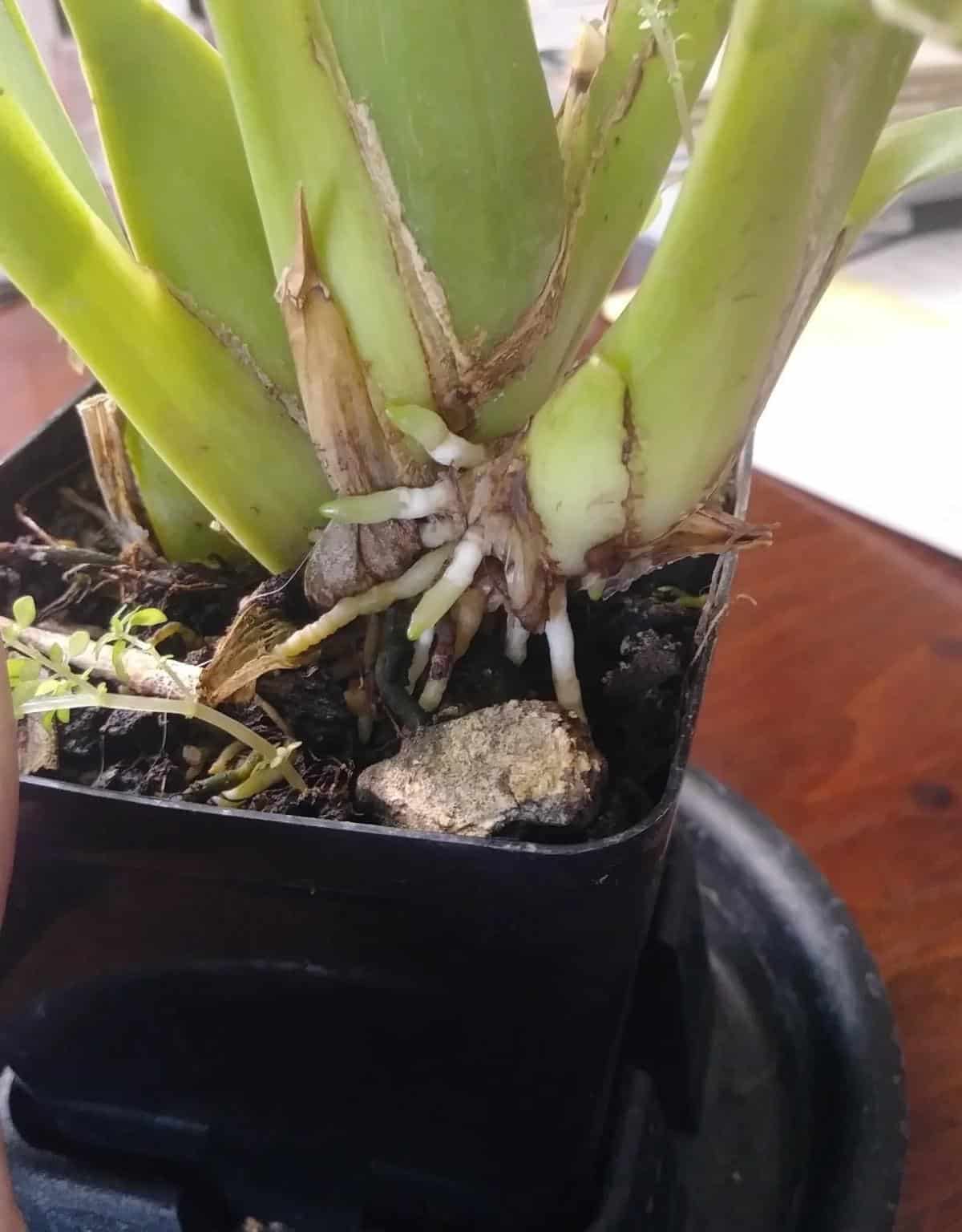
Sometimes, an oncidium will put out a lot of roots. In the wild, oncidiums do this to catch falling leaf litter and get some DIY fertilizer. Give them a little dose of fertilizer, just for fun. And mist the roots daily – they love it.
Water spots and dull, dusty leaves? Clean leaves with a solution of half-milk, half-water. Milk adds shine to the leaves and prevents fungal diseases. Or use the white side of a peeled banana. This shines leaves and removes water spots.
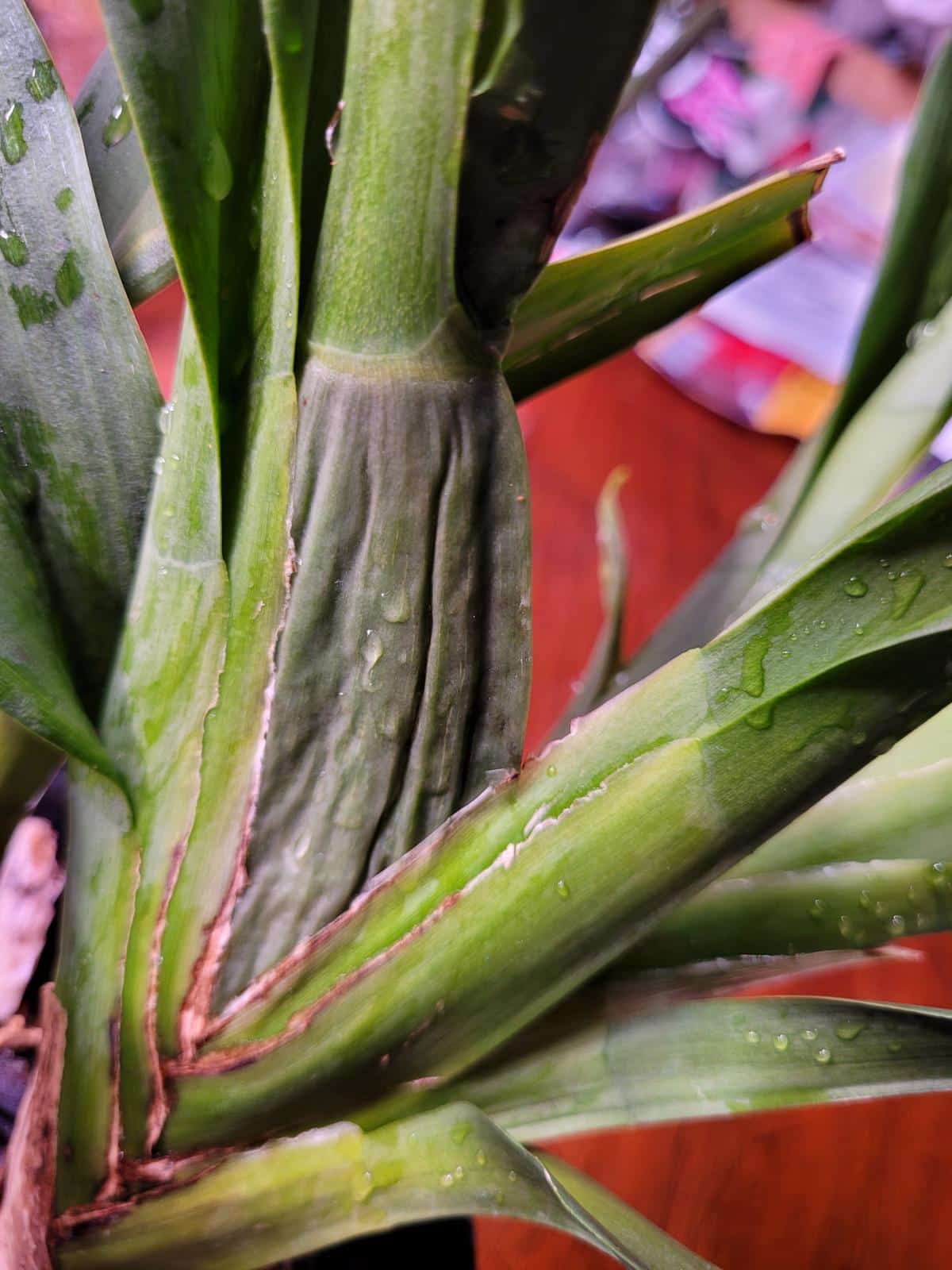
Wrinkled pseudobulbs (in the photo above) mean the plant has been too dry. Add a little sphagnum to the potting medium to hold water for them – they will be thrilled. It’s also very important to keep the oncidium from being so stressed that they start pulling nutrients from the pseudobulbs.
A Note About Oncidium Orchid Names
It’s worth noting that there’s a lot of confusion about orchid species and genera. Orchids are not an easy species to categorize taxonomically in the first place. But lately, orchids seem to change genus and species and even order every whipstitch.
Part of this is due to genetic sequencing. As orchid DNA is analyzed, our understanding of how different species are related keeps changing. Orchid names (nomenclature) are supposed to describe relationships between species, so taxonomists keep having to revise those names as new information about these relationships comes to light.
Oncidiums and other orchids are not only a mix of different species but genera as well. In most plants, you can’t cross genera – that is, even though apple and pear trees are related, you can’t cross them outside of a lab. Ha ha! That silly rule has never stopped orchids! So, that also adds to the confusion.
Growers are understandably fed up with this. Most of them are small operations that don’t have the funds (or time) to update and rewrite millions of plant labels every time a taxonomist sneezes. Who can blame them? All their sweat and labor is going toward keeping thousands of especially fussy or rare orchids happy.
If you’d like to learn more about the taxonomical uproar that the orchid family has wrought, Fair Orchids has an excellent explanation that might turn your brain into jelly. Science!
At the end of the day, an oncidium orchid always looks bright and handsome, whatever its name or taxonomical designation happens to be.
- Read more: Jewel Orchids Grow and Care Guide
- Read more: 18 Easy to Care Orchids for Beginners
- Read more: Butterfly Orchids – The Ultimate Growing Guide
- Read more: 20 Stunning Houseplants with Striped Leaves
- Read more: 12 Rare Variegated Houseplants You’ll Love
- Read more: 5 Types of Holiday Cactuses to Grow Indoors
- Read more: Growing Dendrobium Orchids: Everything You Need to Know


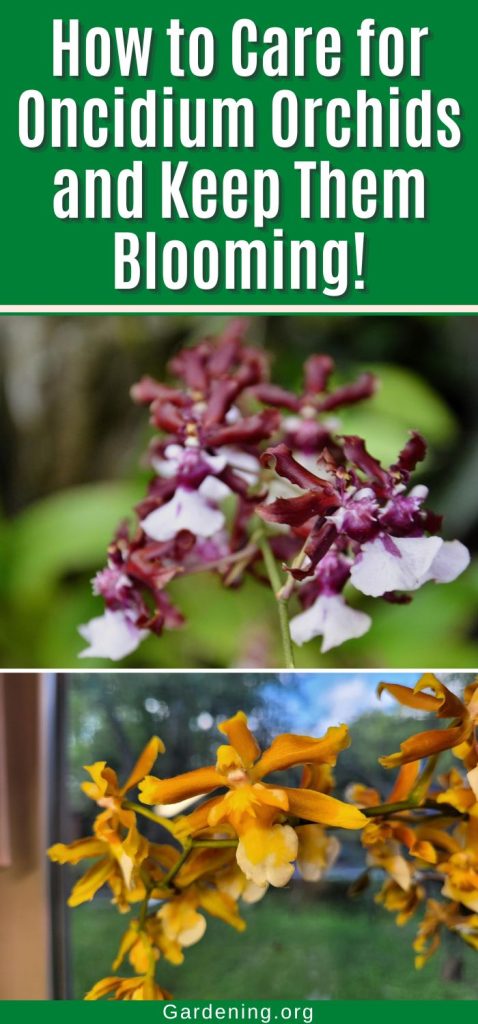

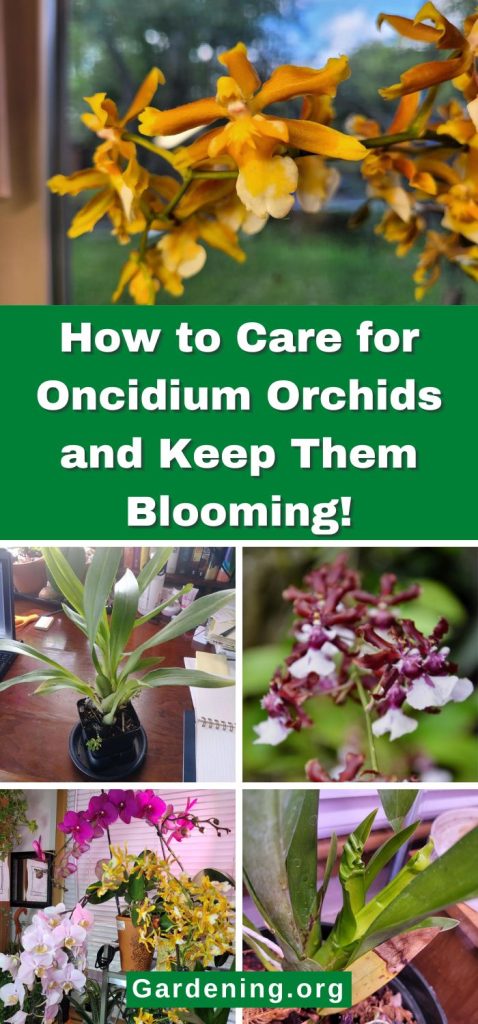
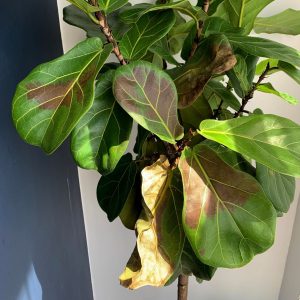
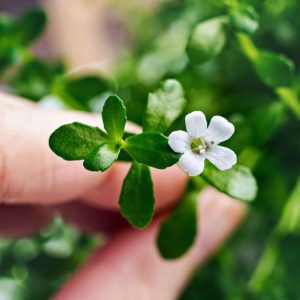
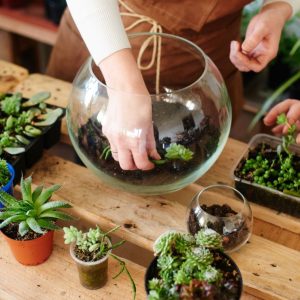
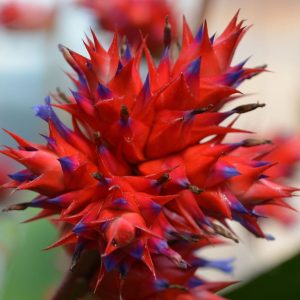
Leave a Reply